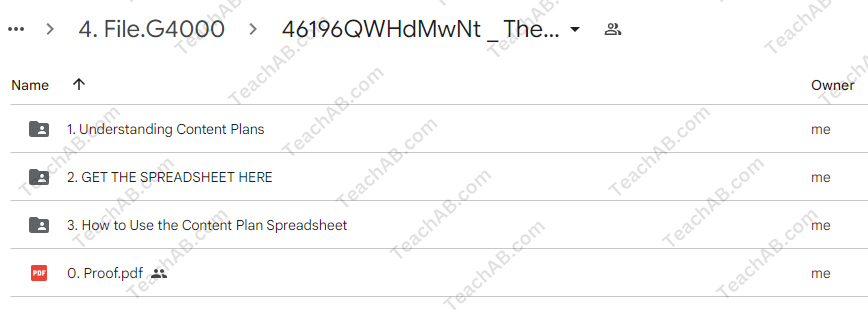-
×
 The Connection Course With Joe Hudson
1 × $31.00
The Connection Course With Joe Hudson
1 × $31.00 -
×
 Fight Like An Old Man - Digital Download With Russell Stutely
1 × $78.00
Fight Like An Old Man - Digital Download With Russell Stutely
1 × $78.00 -
×
 Credit Repair Mastery Class Super Bundle With Mark Clayborne
1 × $15.00
Credit Repair Mastery Class Super Bundle With Mark Clayborne
1 × $15.00 -
×
 Ultimate Etsy Success Blueprint by Jordi Rodriguez
1 × $5.00
Ultimate Etsy Success Blueprint by Jordi Rodriguez
1 × $5.00 -
×
 Great Masters: Mahler-His Life and Music By Robert Greenberg
1 × $5.00
Great Masters: Mahler-His Life and Music By Robert Greenberg
1 × $5.00 -
×
 Super Good Luck Savings Bundle With Hyptalk
1 × $78.00
Super Good Luck Savings Bundle With Hyptalk
1 × $78.00 -
×
 Ralph Gracie Seminar by Ralph Gracie
1 × $6.00
Ralph Gracie Seminar by Ralph Gracie
1 × $6.00 -
×
 The Integral Body Injury Proof Your Body With Mark Suski
1 × $39.00
The Integral Body Injury Proof Your Body With Mark Suski
1 × $39.00 -
×
 Sidestream Smoke FX Overlays by PRO EDU
1 × $8.00
Sidestream Smoke FX Overlays by PRO EDU
1 × $8.00 -
×
 Juicy Relational Skills for Emergence Part 3 Becoming Relational Exploring the I You Space With Sarah Peyton
1 × $139.00
Juicy Relational Skills for Emergence Part 3 Becoming Relational Exploring the I You Space With Sarah Peyton
1 × $139.00 -
×
 History of the Ancient World: A Global Perspective By Gregory Aldrete
1 × $5.00
History of the Ancient World: A Global Perspective By Gregory Aldrete
1 × $5.00
The Content Plan Spreadsheet By Anne Moss
$147.00 $15.00
Reviewing the content plan spreadsheet by Anne Moss: A Comprehensive Analysis – Immediate Download!
Content Proof:

Any brand or individual hoping to successfully engage their audience must develop a unified content strategy. Anne Moss’s content plan spreadsheet is one resource that has drawn interest in this area. This spreadsheet is more than just a set of fields and formulae; it’s a carefully thought-out road plan that can help you create and distribute content successfully. We will go into great detail about the content plan’s components in this post, going over its advantages over other planning tools as well as any potential shortcomings.
An overview of the spreadsheet for the content plan
Users may map out their content across multiple platforms and formats with Anne Moss’s well-structured content plan spreadsheet. It can initially appear to be just another spreadsheet with rows and columns. On closer inspection, though, its strategic functionality and well-considered design become clear. Among other crucial metrics, the spreadsheet usually include sections for target audiences, publication dates, and content kinds.
Key Features of the Spreadsheet
- Content Types: The spreadsheet typically categorizes content into distinct types, such as blog posts, social media updates, newsletters, or videos. This classification helps users in strategically deciding what type of content to create based on their audience’s preferences and behaviors. By diversifying content types, creators can engage different segments of their audience effectively.
- Publication Dates: Another significant feature is the timeline aspect. It allows creators to plan content ahead of time, ensuring timely publication and consistent messaging across platforms. This forward-thinking approach helps avoid last-minute scrambles for content creation.
- Target Audience: Understanding the target audience is imperative in content creation. The spreadsheet encourages users to define their audience segments, creating a better framework for developing content that resonates with those groups. The inclusion of demographics, interests, and pain points enriches the planning process.
Comparative Analysis with Other Content Planning Tools
When placed side by side with other content planning tools and templates available online, it becomes apparent that Anne Moss’s spreadsheet offers distinctive advantages. Below is a comparative overview to illustrate these points clearly:
| Feature | Anne Moss’s Content Plan Spreadsheet | Other Planning Tools |
| Content Categorization | Yes | Varies, often generic |
| Publication Timeline | Flexible and customizable | Often preset templates |
| Audience Segmentation | Comprehensive and detailed | Often lacks detailed demographic focus |
| Usability | User-friendly and intuitive | Some tools can be overly complex |
The table underscores that while other planning tools have their merits, Moss’s spreadsheet shines in its comprehensive approach to audience engagement and content categorization. For those who favor a customized strategy, this flexibility is invaluable.
The Influence of Content Planning and Emotional Engagement
Although features and data serve as the foundation of the content strategy, the emotional connection generated by well-crafted content should also receive equal consideration. Stronger bonds between a brand and its audience are frequently the result of content that emotionally connects with them. The spreadsheet is a creative and inspirational spark in addition to being a useful instrument for logistics.
The joy of creating stories that would resonate with their audience is mixed with the anticipation of a content creator sitting down with this spreadsheet. They may create compelling stories that inspire and enthrall readers by carefully organizing their posts and campaigns. This spreadsheet can assist in precisely and artistically defining the emotional narratives that weave a group together.
Case Study: Effective Execution
The several firms that have adopted Anne Moss’ content strategy provide a significant illustration of its real-world success. For example, a small company that sells environmentally friendly goods utilized the spreadsheet to schedule their material for a campaign that promotes sustainable living. Within three months, they observed a 30% boost in interaction by identifying the interests of their audience and aligning content formats, such as blog pieces with ideas for home gardening and Instagram stories with eco-friendly products.
Building trust and providing the audience with genuine value are more important aspects of engagement than just focusing on numbers. These outcomes clearly show how strategic content planning may have an impact.
In conclusion
To sum up, Anne Moss’s content plan spreadsheet is an effective resource for producers looking to improve their approach to content creation. It stands out in the crowded field of content planning tools thanks to its alluring features, adaptability, emotional relevance, and usefulness. It enables users to establish genuine connections with their audience by providing organized yet adaptable frameworks, which facilitates idea generation and workflow optimization.
The analysis’s findings highlight how crucial it is to combine strategic planning with emotion to produce content that inspires and engages readers in addition to providing information. Therefore, if you haven’t looked into this spreadsheet yet, it might be worthwhile for you to do so in order to see what possibilities it holds for your content journey.
Frequently Asked Questions:
Business Model Innovation: We use a group buying approach that enables users to split expenses and get discounted access to well-liked courses. Despite worries regarding distribution strategies from content creators, this strategy helps people with low incomes.
Legal Aspects: There are many intricate questions around the legality of our actions. There are no explicit resale restrictions mentioned at the time of purchase, even though we do not have the course developers’ express consent to redistribute their content. This uncertainty gives us the chance to offer reasonably priced instructional materials.
Quality Control: We make certain that every course resource we buy is the exact same as what the authors themselves provide. It’s crucial to realize, nevertheless, that we are not authorized suppliers. Therefore, our products do not consist of:
– Live coaching calls or sessions with the course author.
– Access to exclusive author-controlled groups or portals.
– Membership in private forums.
– Direct email support from the author or their team.
We aim to reduce the cost barrier in education by offering these courses independently, without the premium services available through official channels. We appreciate your understanding of our unique approach.
Be the first to review “The Content Plan Spreadsheet By Anne Moss” Cancel reply
You must be logged in to post a review.













Reviews
There are no reviews yet.